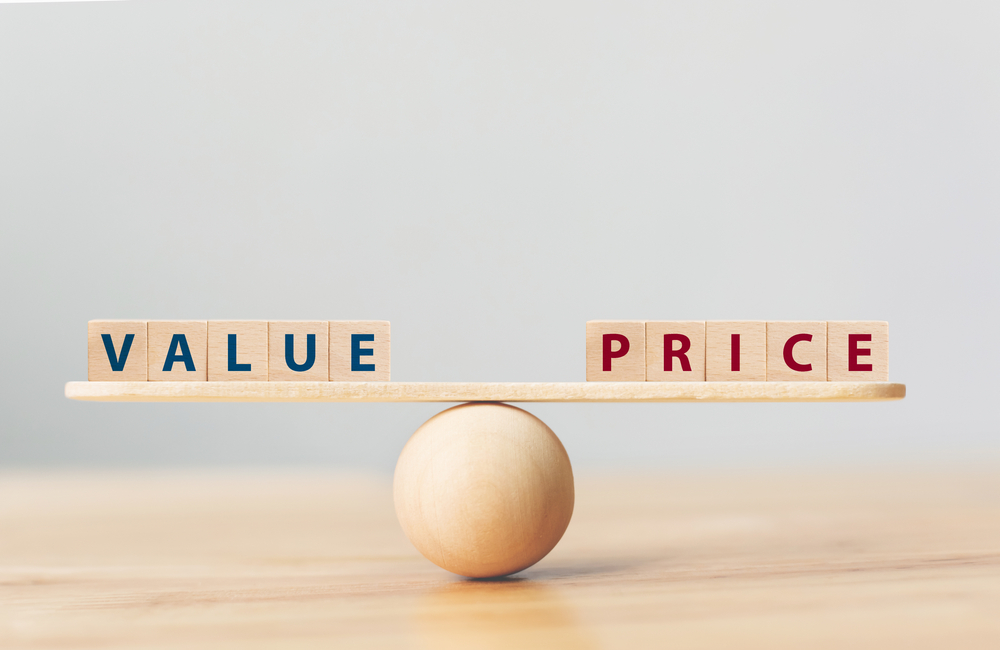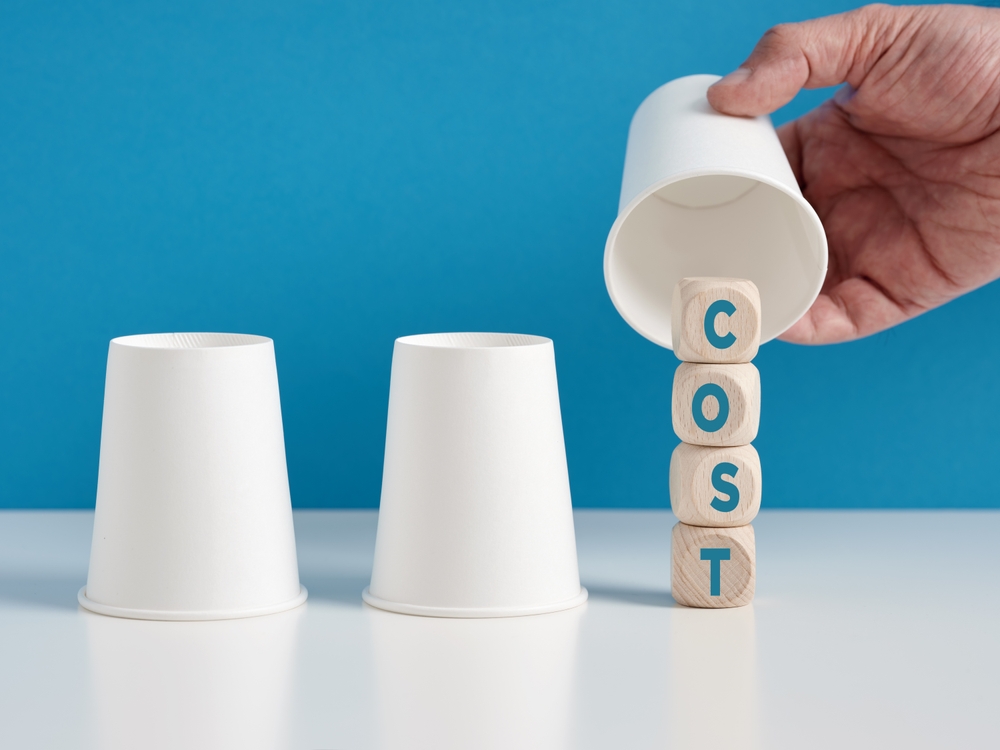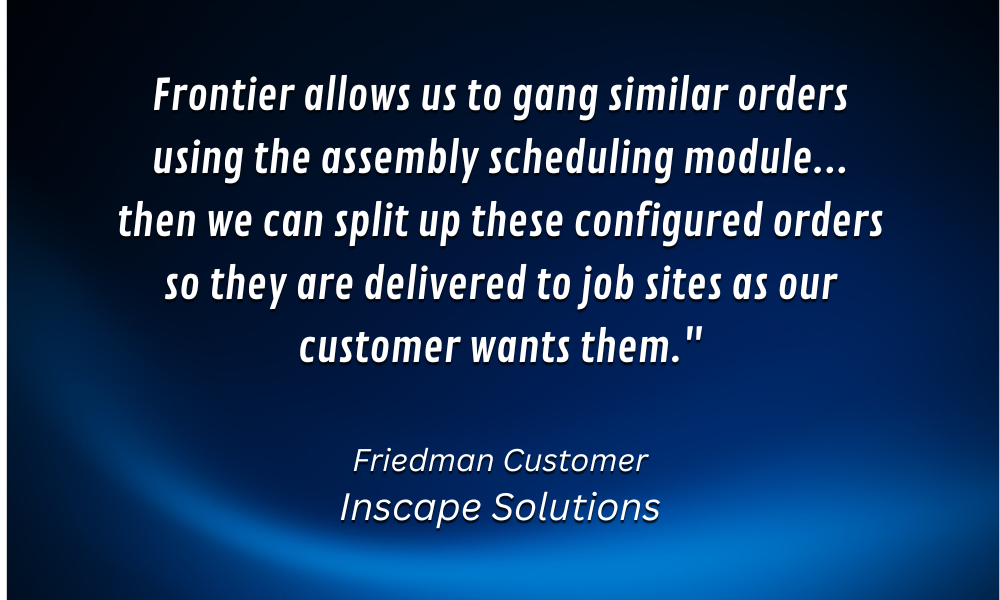
ERP (Enterprise Resource Planning) systems are indispensable tools for companies to streamline operations and improve productivity. They are especially helpful for manufacturers, providing valuable insights into efficient processes. However, when choosing the best ERP, pricing can become confusing with different features and fees.
Top10ERP.org even goes as far as saying “…comparing prices can be like comparing apples to oranges…” in their price comparison article. In this blog post, we’ll decipher ERP pricing models, what factors influence price, and how to choose the right ERP for your business.
Understanding ERP Systems
ERP software is a comprehensive system to manage all aspects of your business. In manufacturing, an ERP system includes key features for financial, customer, inventory, HR, and supply chain management. An ERP provides a clear view of all core operations. By centralizing data and processes, they enable better decision-making, increased efficiency, and improved collaboration.
Some ERP systems only provide basic features at a low cost. Some vendors throw in everything but the kitchen sink at much higher prices. Knowing what you need from an ERP system is just as important as just picking a price point that’s within your budget.
Choose the Right ERP System for Your Business
- Assess Your Business Needs: Find an ERP system that closely aligns with your needs and addresses challenges unique to your business. Focus on identifying and solving your top business issues and prioritize them first. If the system can resolve additional challenges or meet other needs, that’s a plus.
- Research and Compare Vendors: Seek a vendor with a proven history of successful ERP implementations and customer loyalty. Also, request references from other businesses in your industry and see a demo to evaluate their system.
- Negotiate Pricing: Look for vendors that offer transparent pricing. Don’t hesitate to negotiate with vendors to get the best deal. Consider long-term contracts that offer better rates.
- Consider Scalability: Select an ERP system that can grow alongside your business. It should handle rising transaction volumes, additional users, and new locations, without causing significant disruptions or performance issues.
- Seek Expert Advice: Many companies turn to ERP consultants during the needs analysis and selection process. Consulting with ERP experts can help you examine insights into your business’s best pricing models and systems.
Key Factors That Influence ERP Pricing

Don’t choose a new system solely based on ERP pricing. Choose a reliable ERP system that works best for your company and your budget.
ERP pricing can vary significantly based on factors like the size of your company, included features, and which vendor you choose. All elements are important to consider during your budgeting process. Let’s explore key reasons in more detail:
Company Size
The size of your company is a major factor affecting ERP pricing. Larger organizations with extensive operations and complex processes typically require more sophisticated ERP systems, leading to higher costs for software licenses and customization services.
Level of Customization
The extent of customization needed also determines the price of your ERP. Companies with unique processes or industry-specific needs often require tailored software solutions. This customization can involve programming, database design, and integration with other systems, which can increase costs.
Implementation
ERP implementation costs can encompass hardware, software, and consulting fees. The complexity of the implementation process also plays a role in determining ERP pricing. Your costs may be higher if you need to integrate the ERP with existing software, migrate legacy data, and conduct external testing.
Maintenance and Support
Ongoing maintenance and support are vital to ensure you receive the most benefits from your ERP system. Costs for these services can vary widely among vendors, so you should factor them into your total cost of ownership during the evaluation process. Investing in proper training ensures users can maximize the system’s functionalities. Remember that ongoing support and maintenance are often charged separately for perpetual licenses.
ERP Vendor
ERP vendors have varying price points, so you should assess each vendor’s reputation, expertise, and support offerings. Some vendors may require the purchase of extra software or services, which can further increase overall ERP pricing.
Number of Users
ERP pricing often depends on the number of users. More users typically mean higher costs, with different pricing tiers available based on user count.
Deployment Method
Whether on-premises or cloud-based, the deployment method determines ERP pricing. Cloud-based ERPs usually have lower upfront costs but may have higher long-term subscription fees. On-premises solutions require substantial initial investment in hardware and software but can be more cost-effective over time.
Hidden Costs to Consider
Unlike other products or services, higher ERP pricing doesn’t always mean that you get more or better ERP features. Watch out for vendors that overpromise results to net them a higher profit or simply charge too much for what they provide. Here are some examples of hidden costs you need to be on the lookout for:

You won’t be surprised with hidden fees with Frontier’s transparent ERP pricing and more advanced features included.
Additional Software: Some ERP vendors don’t include important features in their base ERP system. You’ll typically have to purchase additional software if you need advanced features like production tracking, Configure, Price, Quote, or shop floor control.
Data Migration: Transferring data from legacy systems to the new ERP involves time and resources. You may even have to contract out for migration, integration, and testing. Ensuring data accuracy and completeness is crucial, and this process can be more complex and costly than anticipated.
Downtime During Transition: Implementing an ERP system can lead to temporary productivity loss as employees adapt to new processes. Many companies do not consider this during the budgeting process. Planning for this transition period, choosing a user-friendly ERP, and providing adequate support can help minimize downtime.
Upgrades and Scalability: As your business grows, you may need to scale the ERP system or upgrade to newer versions. These changes might result in additional costs, so it’s essential to choose a system that can grow with your business.
4 Types of ERP Pricing Models
ERP pricing models usually come in one of four forms. Work with your project team or consultant to determine which pricing model best suits your needs. Remember, the ERP pricing model you pick can greatly affect the overall cost of implementation.
1. Subscription-Based Pricing
Subscription-based pricing is a popular model, especially for cloud-based ERP systems. Businesses pay a monthly or annual subscription fee, which typically includes software updates, maintenance, and support. This pay-as-you-go ERP pricing model offers flexibility and allows companies to spread costs over time.
2. Perpetual Licensing
Perpetual licensing involves a one-time upfront cost for the software license. However, there are ongoing costs for maintenance, support, and updates. This model is often used for on-premises ERP systems and can be more cost-effective in the long run, depending on the company.
3. Tiered Pricing
Tiered pricing models offer different packages or tiers with varying levels of functionality. Basic tiers may include essential features, while higher tiers offer advanced capabilities and additional services. This model allows businesses to choose a package that fits their current needs and budget. It also provides flexibility to upgrade to a different tier as the business grows.
4. User-Based Subscription
The User-based ERP pricing model charges a fee based on the number of users accessing the system. This model is common in cloud-based ERP solutions. Costs may vary depending on the type of user (e.g., full-access vs. limited-access users).
Calculating the Total Cost of Ownership (TCO)
The Total Cost of Ownership (TCO) includes all direct and indirect costs associated with the ERP system over its lifecycle. This includes software licenses, hardware, implementation, training, maintenance, support, and upgrades. Calculating TCO helps businesses understand the long-term financial commitment and compare different ERP solutions more accurately.
Cost-Benefit Analysis
Conducting a cost-benefit analysis involves comparing the costs of an ERP system with the expected benefits. While ERPs require a substantial investment, they provide significant cost savings through improved efficiency and better resource management. Real-world examples show that businesses often achieve significant ROI (Return on Investment) with successful ERP implementations.
Why Choose Frontier ERP
With over 40 years of industry expertise, Friedman is committed to providing the best ERP system for make-to-order, make-to-stock, or mixed-mode manufacturing. As a result, Frontier has become the leading ERP system for custom manufacturers.
With Frontier ERP, you get the best features and services for streamlined operations with no hidden fees! They include:
- Complete ERP implementation plan development and analysis with a dedicated project manager.
- Superior customer support and maintenance are available 24/7.
- User-friendly ERP with diverse employee training options.
- Built-in Configure, Price, Quote software with our powerful parametric product configurator for easier sales and configuration management.
- Comprehensive Financial System for the basics plus multi-currency, detailed reporting, and cost management.
- Manufacturing Execution System for better shop floor control, cut-part processing, and paperless production tracking.
- Integrated Manufacturing Management with material and distribution requirements planning.
- Full Supply Chain Management with automated procurement workflows, inventory control, and vendor relationship management.
- Included Customer Service and Field Service Management so you never miss a beat with your clients.
We also offer advanced modules for processes like dealer network management, data transfers, and CAD drawing integration as an addition to the base ERP.
Conclusion
Remember, investing in an enterprise system is a strategic decision beyond initial ERP pricing. It involves the total cost of ownership and potential long-term benefits. Ultimately, selecting the right ERP system requires careful planning and evaluation. By conducting a thorough cost-benefit analysis, you can confidently choose an ERP system that meets your needs now and into the future.
Would you like to learn more about Frontier ERP’s features or see a FREE demo?






